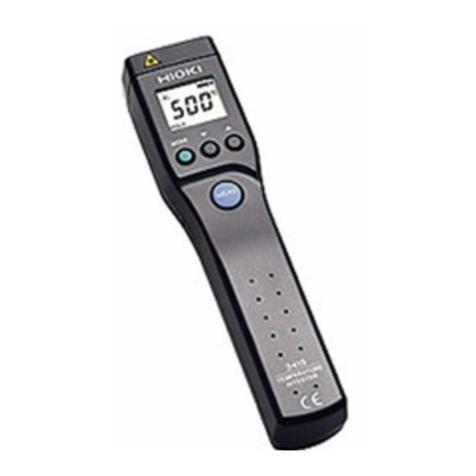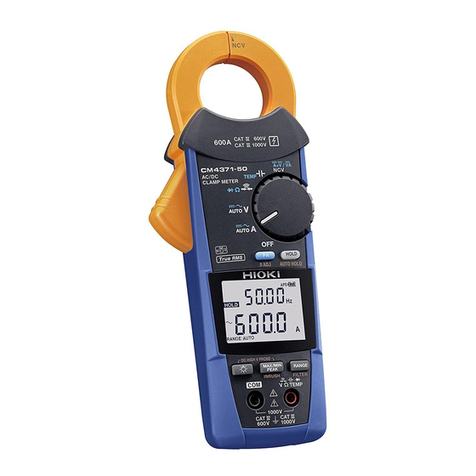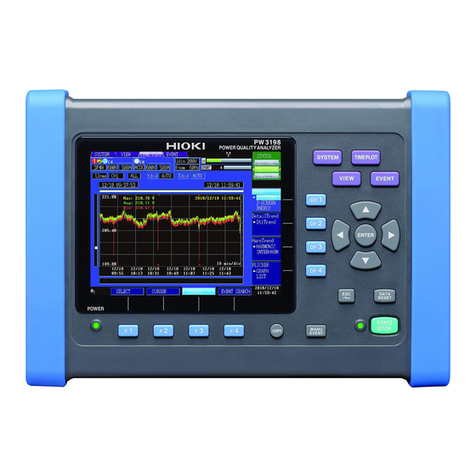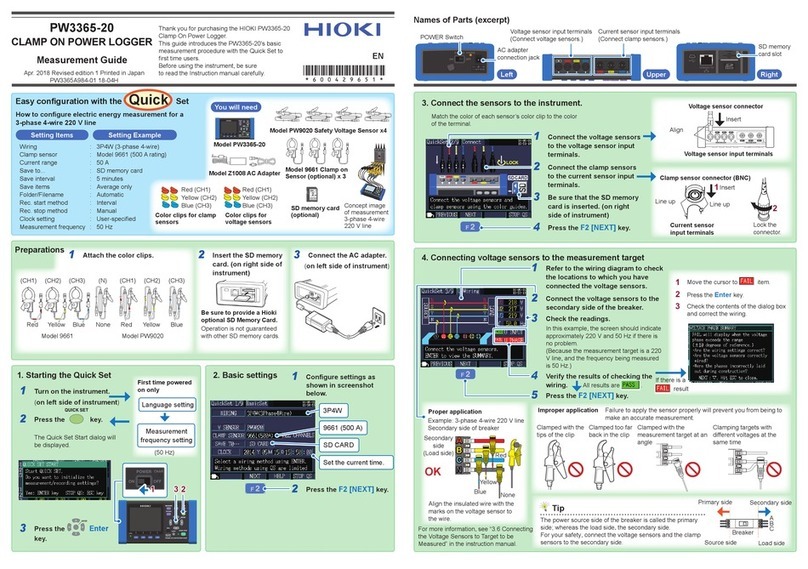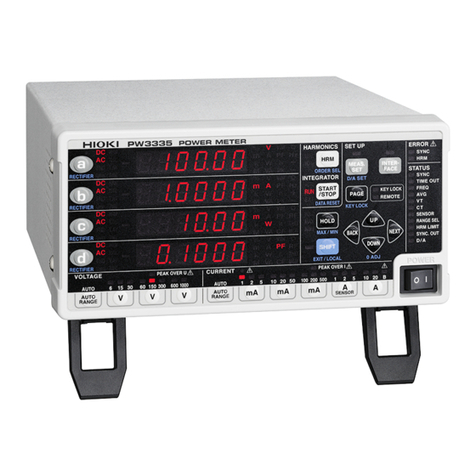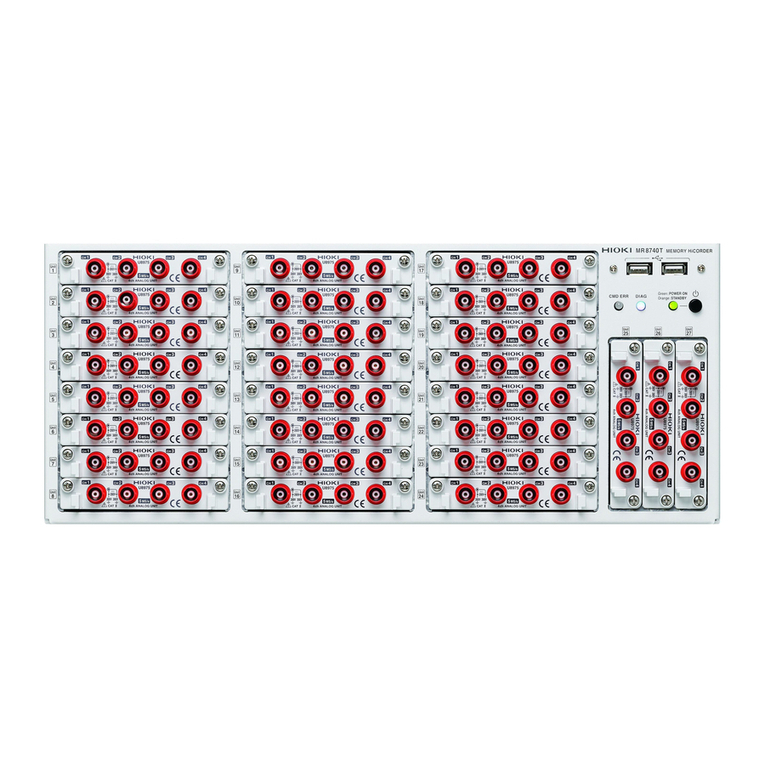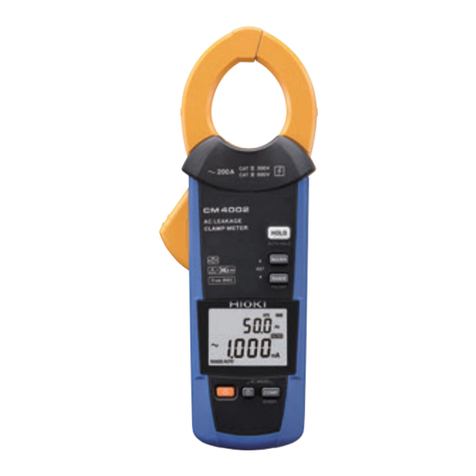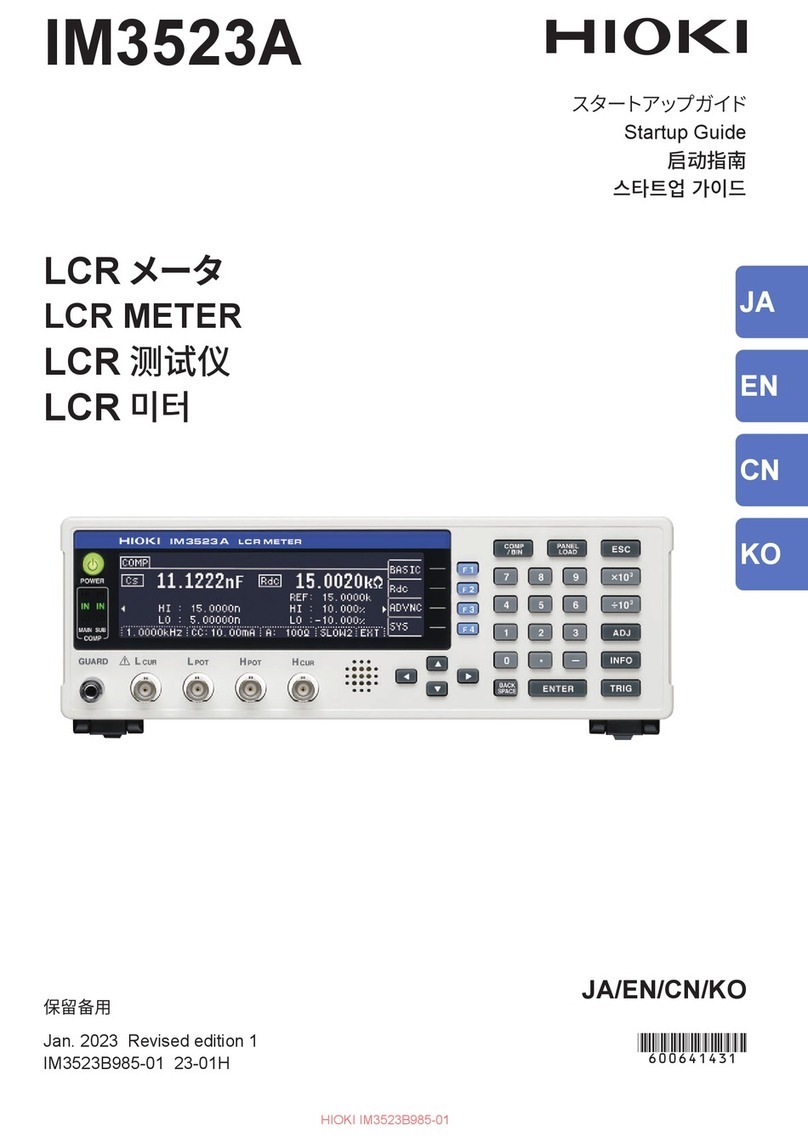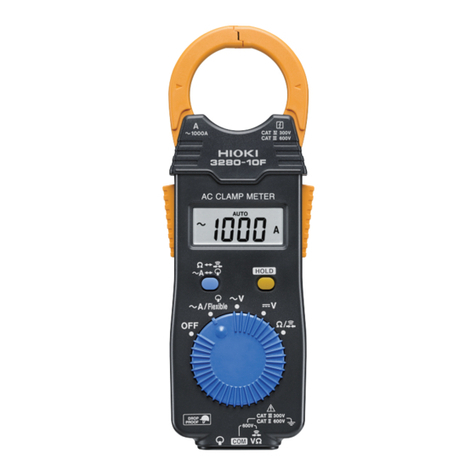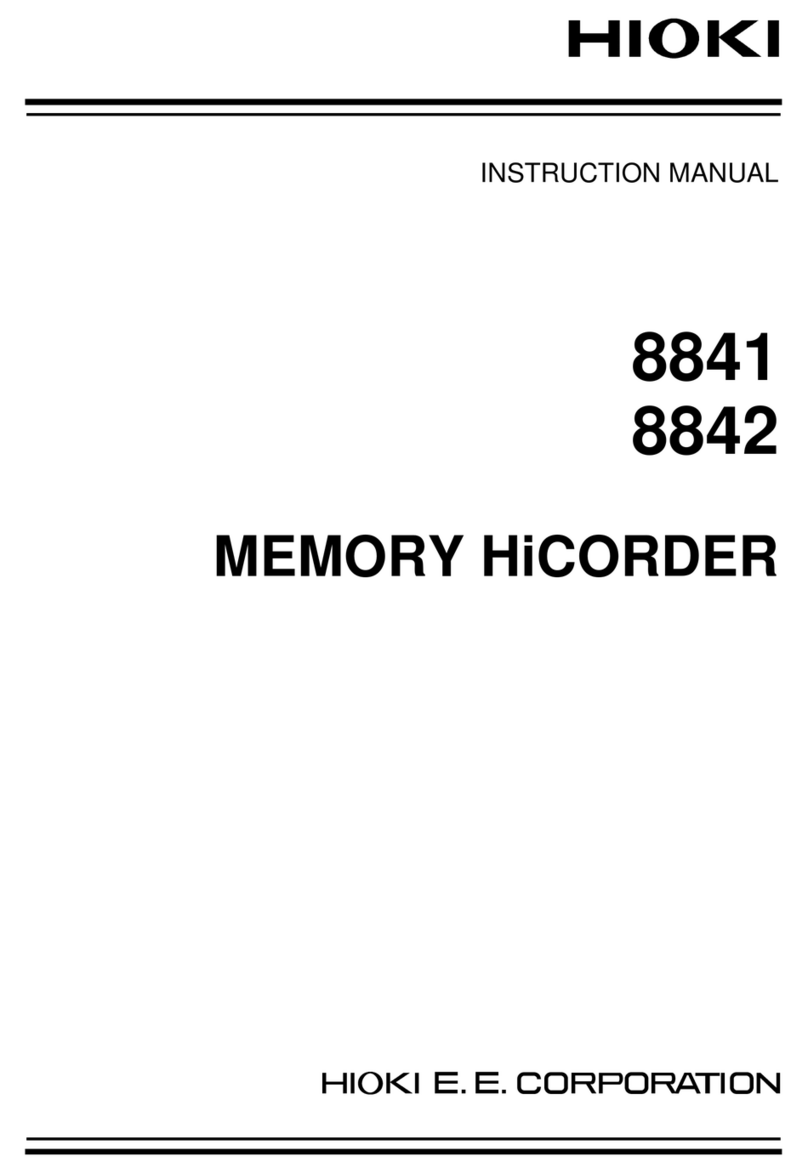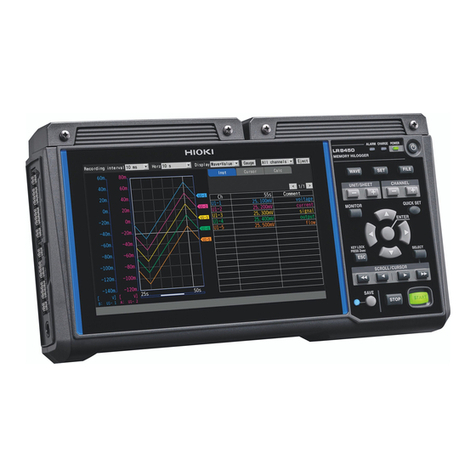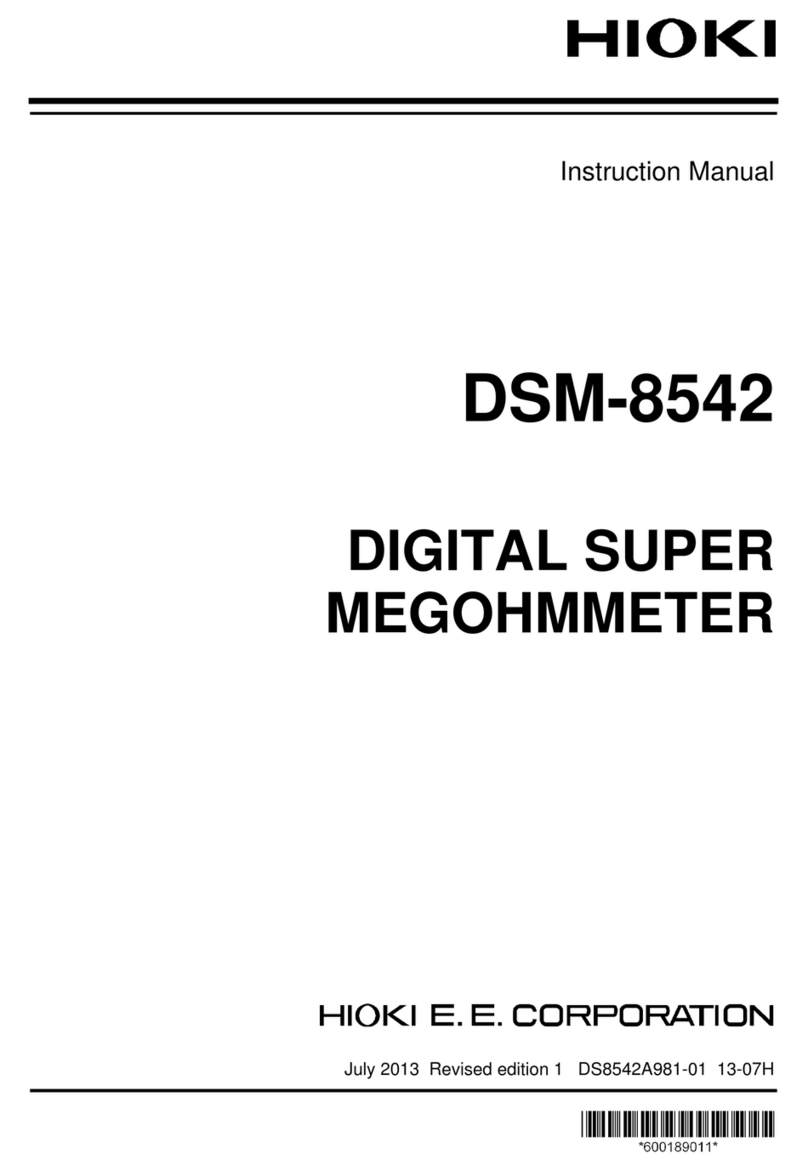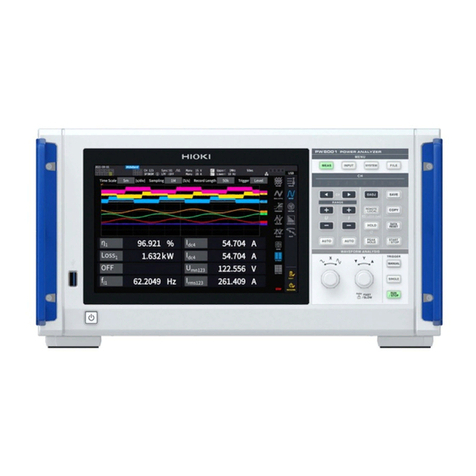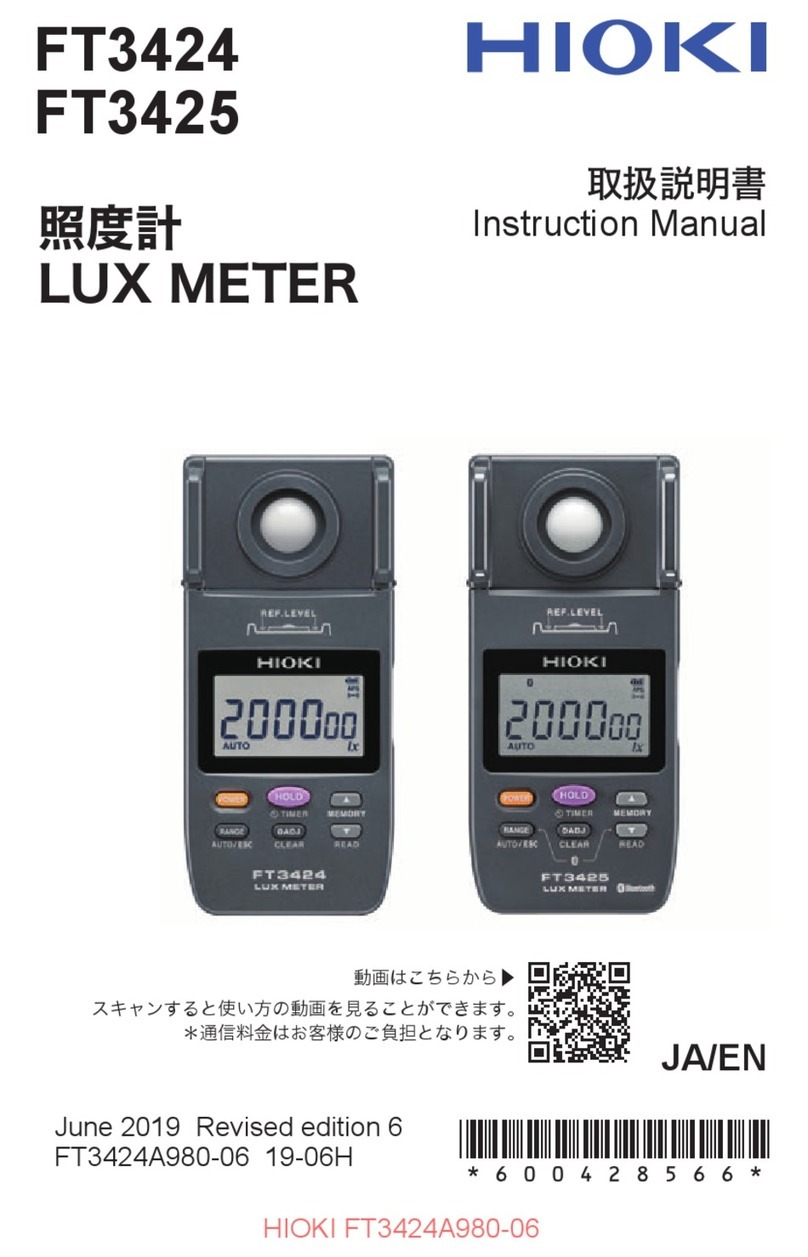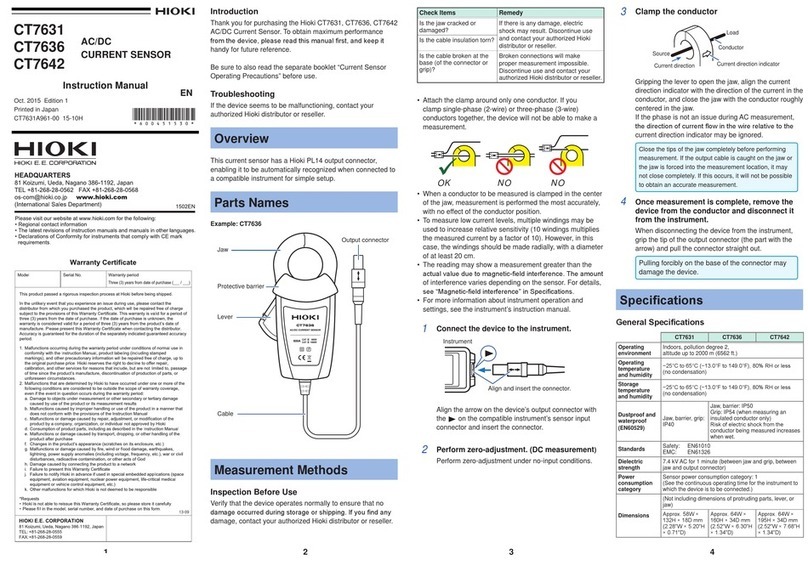
iii
____________________________________________________
Safety Notes
___________________________________________
Overvoltage Categories (CAT)
This device conforms to the safety requirements for CAT I
measurement instruments.
To ensure safe operation of measurement instruments, IEC
60664 establishes safety standards for various electrical
environments, categorized as CAT I to CAT IV, and called
overvoltage categories. These are defined as follows.
CAT I : Secondary electrical circuits connected to an AC
electrical outlet through a transformer or similar
instrument.
CAT II : Primary electrical circuits in equipment
connected to an AC electrical outlet by a power
cord (portable tools, household appliances, etc.)
CAT III : Primary electrical circuits of heavy equipment
(fixed installations) connected directly to the
distribution panel, and feeders from the
distribution panel to outlets.
CAT IV : The circuit from the service drop to the service
entrance, and to the power meter and primary
overcurrent protection instrument (distribution
panel).
Higher-numbered categories correspond to electrical
environments with greater momentary energy, so a
measurement instrument designed for CAT III
environments can endure greater momentary energy than
one designed for CAT II. Using a measurement instrument
in an environment designated with a higher-numbered
category than that for which the instrument is rated could
result in a severe accident, and must be carefully avoided.
